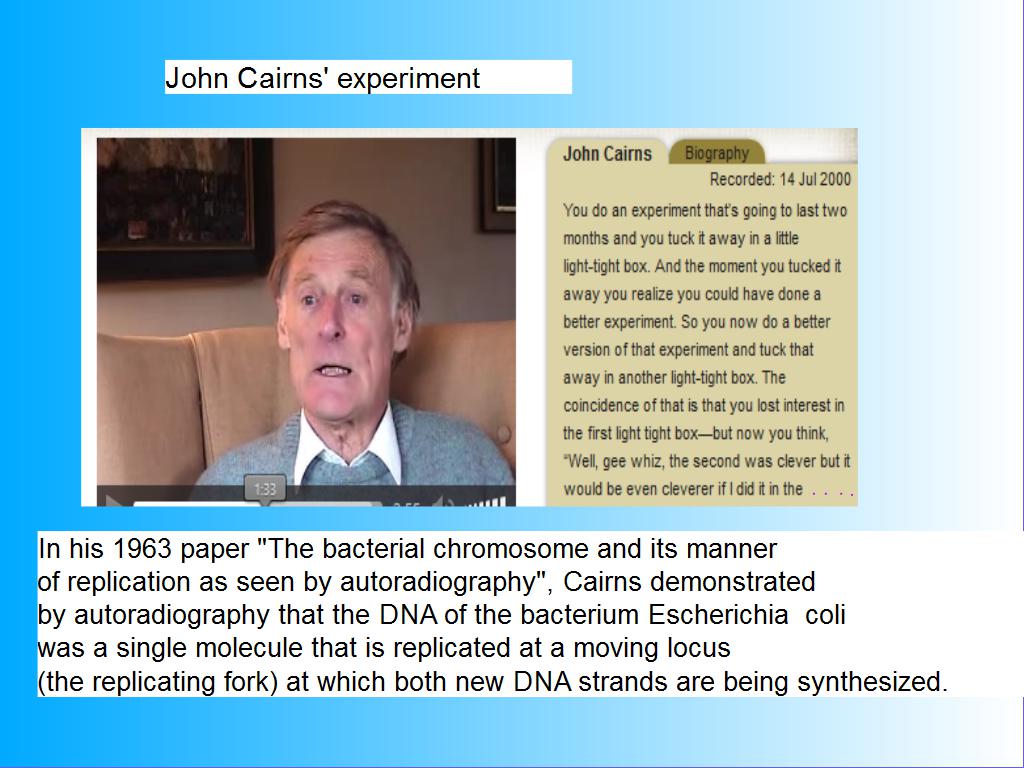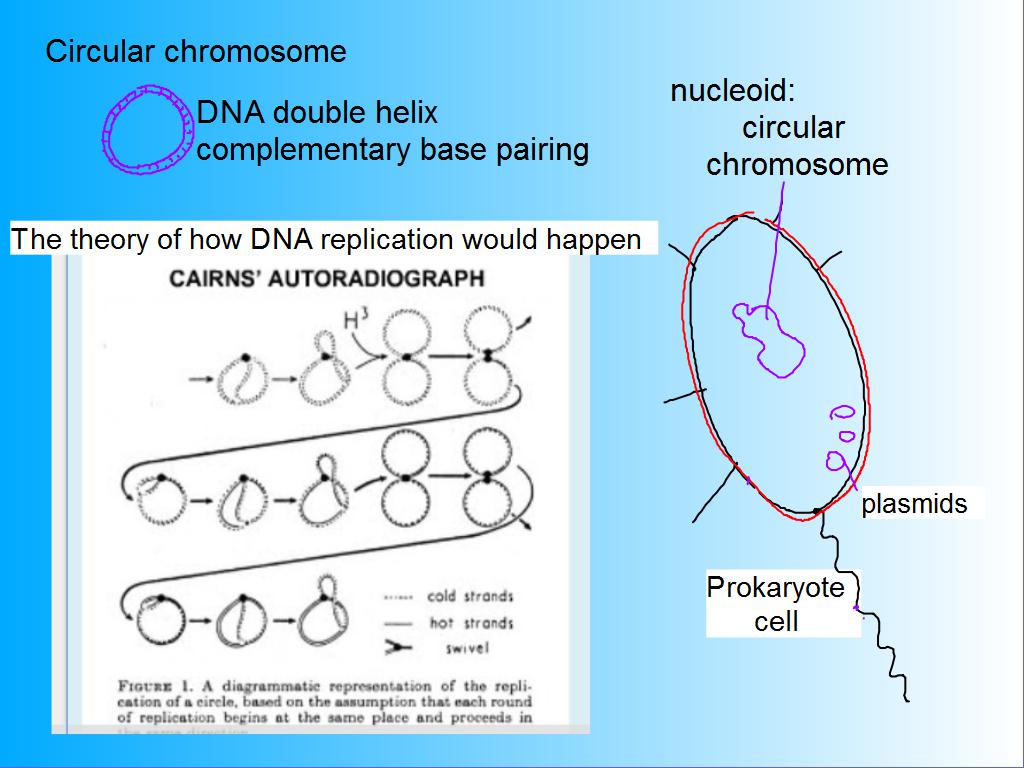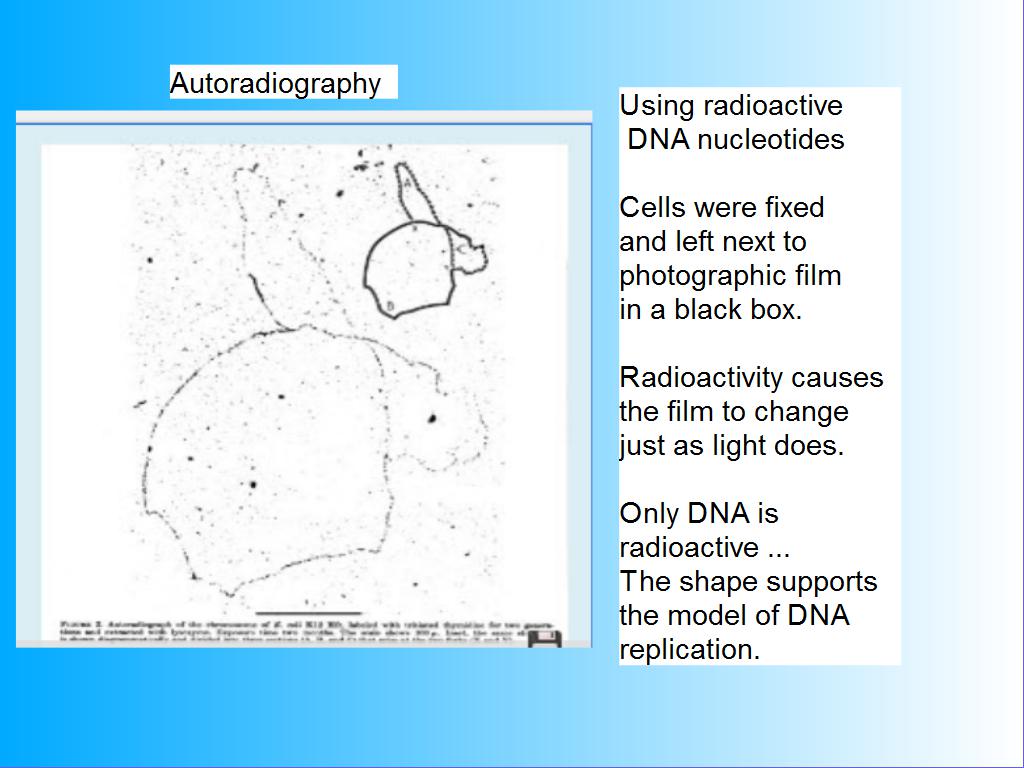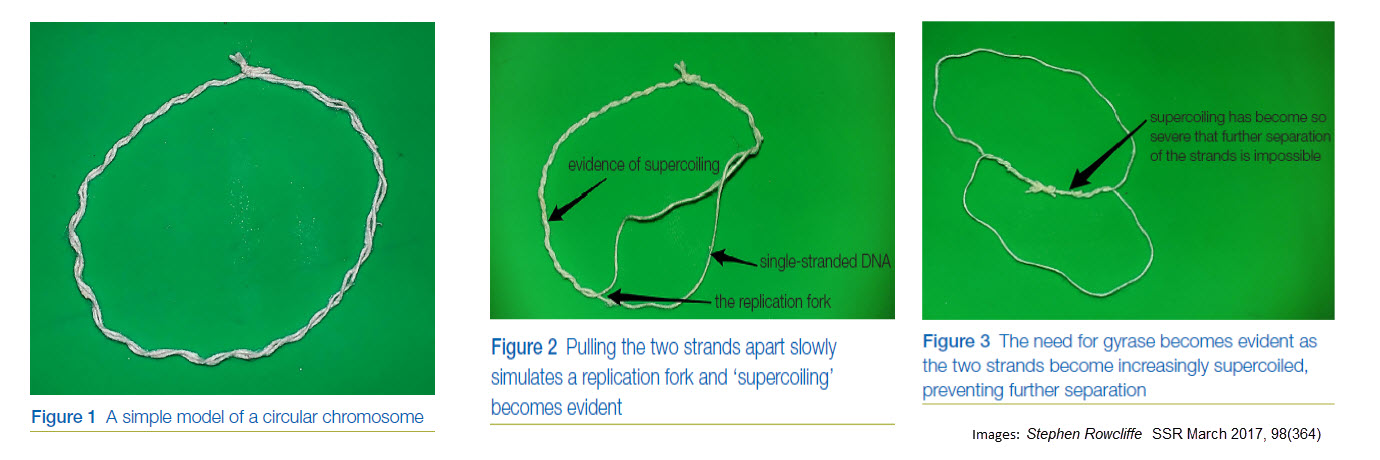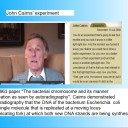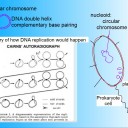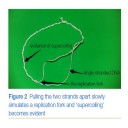Chromosomes
 This lesson begins with a comparison of prokaryote and eukaryote chromosomes and an introduction to the concept of diploid and haploid nuclei. The second activity introduces the use of databases to compare chromosome numbers of different species and the location of genes within different species, including cytochrome oxydase c. The last activity is a short interview with John Cairnes who developed autoradiography to measure chromosome length and first described the structure of bacterial chomosomes.
This lesson begins with a comparison of prokaryote and eukaryote chromosomes and an introduction to the concept of diploid and haploid nuclei. The second activity introduces the use of databases to compare chromosome numbers of different species and the location of genes within different species, including cytochrome oxydase c. The last activity is a short interview with John Cairnes who developed autoradiography to measure chromosome length and first described the structure of bacterial chomosomes.
Lesson Description
Guiding Questions
- How is the DNA arranged in prokaryotes and eukaryotes?
- How many chromosomes does a eukaryote have?
Activity 1 Prokaryote and Eukaryote chromosomes
The structure of prokaryote and eukaryote chromosomes. Watch the following short introduction to the structure and function of eukaryotic chromosomes.
Study these flashcards of the key points about genes and chromosomes.
Complete the following ![]() Quick questions about genes and chromosomes
Quick questions about genes and chromosomes
Activity 2: Databases and the number of chromosomes in different species
Click the links on each of the binomial names below to find out the genome size of these species and to compare diploid chromosome numbers.
Genome Browser links for five species
Homo sapiens, Pan troglodytes, Canis familiaris, Oryza sativa, Drosophila melanogaster,
The hyperlinks on each name link to the karyotype page in the Ensembl.org database search engine from Wellcome Sanger.The hyperlinks on each name link to the karyotype page in the Ensembl.org database browser from Wellcome Sanger.
Complete the ![]() Genome size and chromosome number activity.
Genome size and chromosome number activity.
http://www.ncbi.nlm.nih.gov/genome/browse/ this page can be used to find the genome sizes in the guide
http://www.ensembl.org this is a better genome browser, you can even zoom in to see base pairs. It does also have plants and invertebrate species on http://ensemblgenomes.org/
Watch this video and consider the question,
"Will these databases and today's new sequencing technologies create a better world for tomorrow?"
Activity 3 John Cairns and autoradiography
![]() John Cairns talking about his experiments revealing the length & structure of prokaryote chromosomes
John Cairns talking about his experiments revealing the length & structure of prokaryote chromosomes
These diagrams illustrate how the model of DNA replication in a prokaryote cell was developed to explain the process. This process was not observable until John Cairns did his experiments. The sketches are based on theoretical understanding,
The diagram on the left shows a diagrammatic representation of the theory of DNA replication in prokaryote chromosomes and the autoradiograph which John Cairns produced on the right shows a molecule of E.coli DNA. The experimental data supports the theory.
In his 1963 paper "The bacterial chromosome and its manner of replication as seen by autoradiography", Cairns demonstrated by autoradiography that the DNA of the bacterium Escherichia coli was a single molecule that is replicated at a moving locus (the replicating fork) at which both new DNA strands are being synthesized.
http://samsonlab.mit.edu/cairns.html
When interviewed about these experiments Cairns commented, "I said to myself, I know about autoradiography, why don’t I see if I can measure the length of these molecules using this technique? And did some little calculation and decided that it should be possible and only will take two months under film. And that's what I did at Cold Spring Harbour"
It is worth noting that autoradiography became an essential tool in gene sequencing in the 1980s and is still in use today in a modified form in genetic labs around the world.
Further reading:
Methods of Gene sequencing using autoradiography
Teachers notes
The lesson begins with a simple description of the chromosomes in prokaryotes and eukaryotes, students make some basic notes in Activity 1
Activity 2 is a look at some of the mind boggling genetic database engines and this activity is a simple data search for some key facts abut genome sizes. The potential in these tools is huge as the video TED talk shows.
Model answers are available here -
Activity 3 is just a historical reading about the work of John Cairns and autoradiography. for any student interested there are also a couple of links to pages which (quite) simply explain how autoradiography and modern computer power are used in modern gene sequencing.
An excellent string model of prokaryote DNA replication from the ASE byStephen Rowcliffe

 IB Docs (2) Team
IB Docs (2) Team


